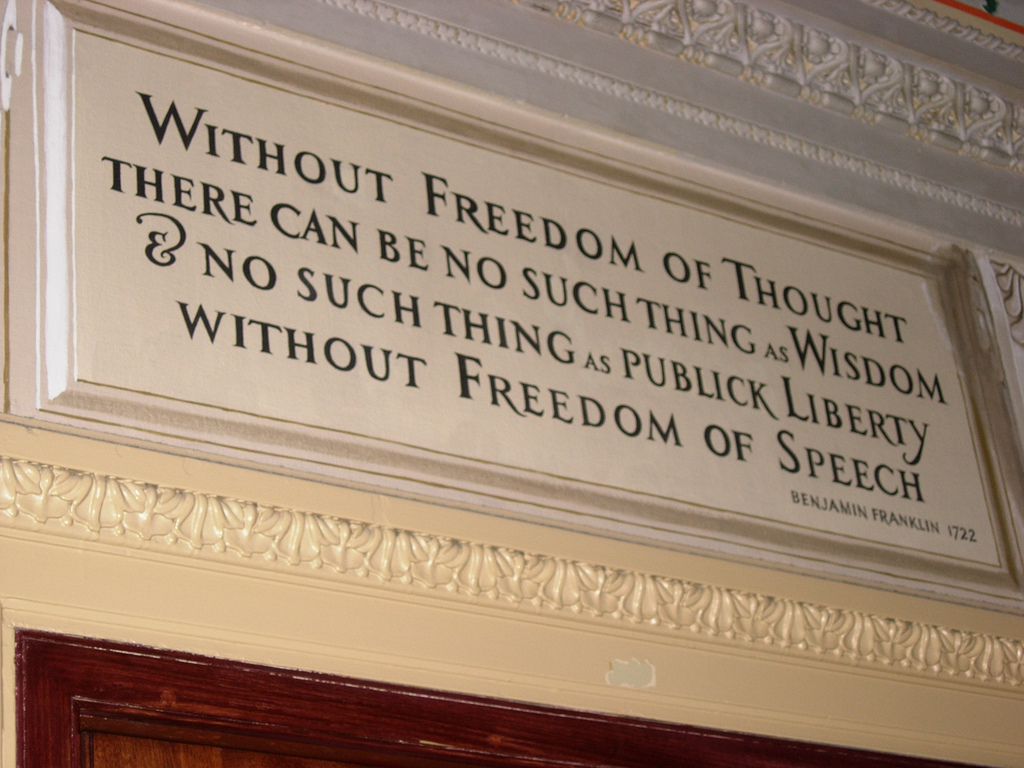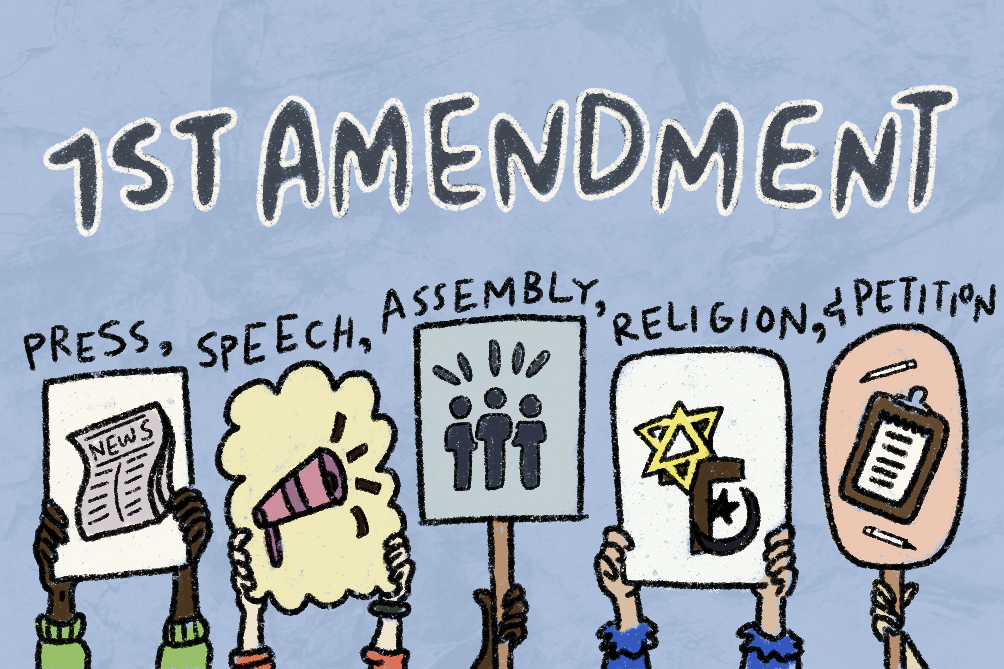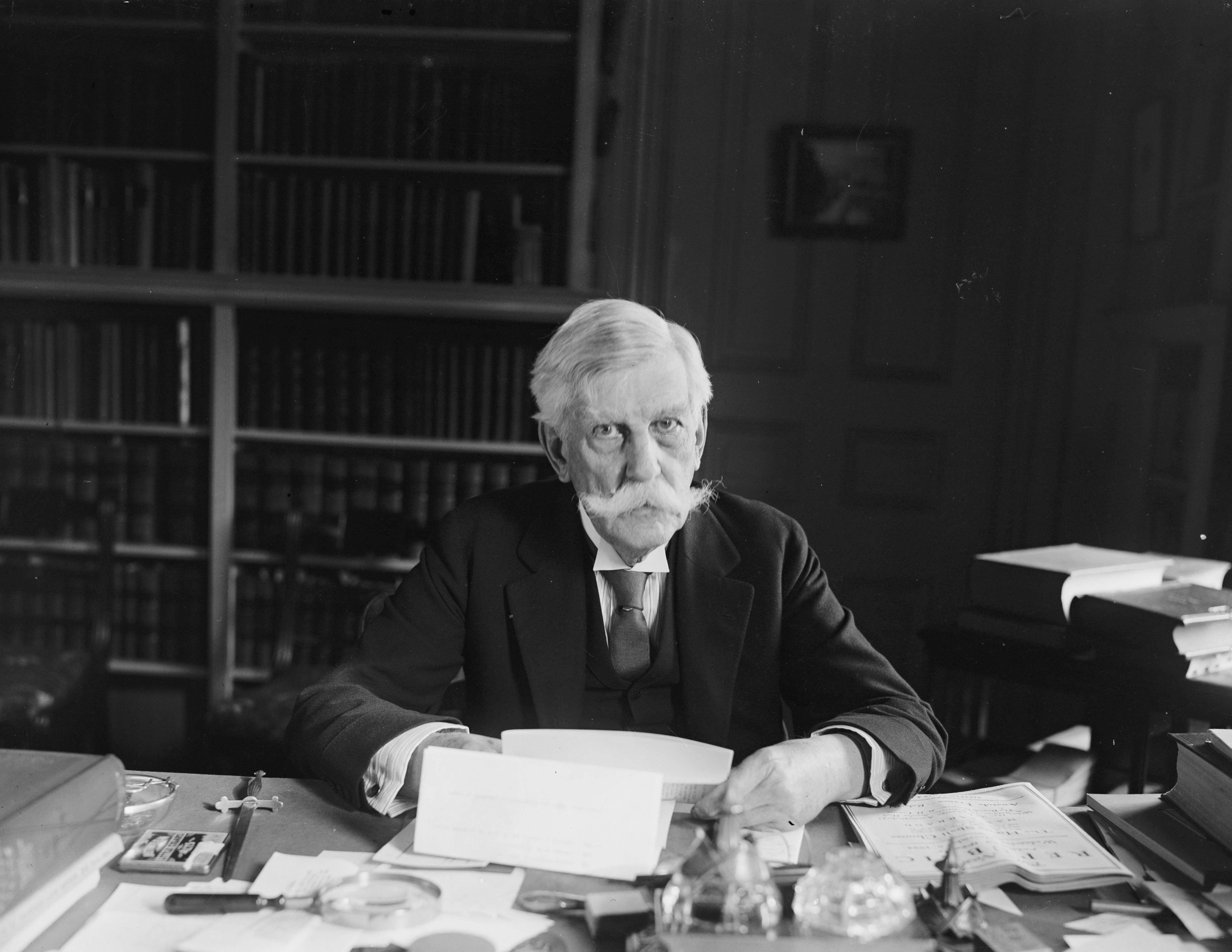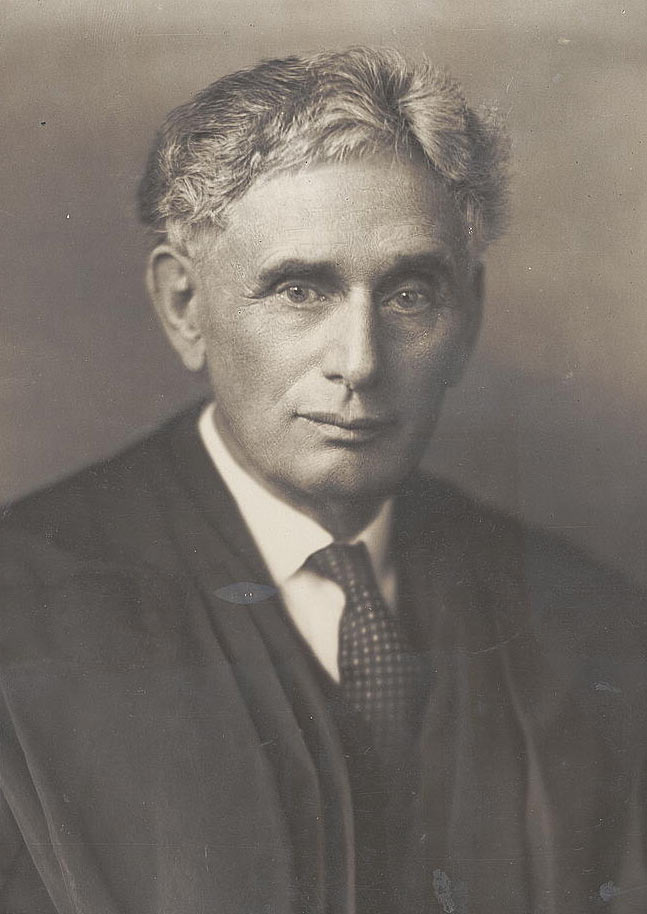Quote by Benjamin Franklin

Focus Question: How has the Supreme Court interpreted the First Amendment rights of individuals during American history?
Topics on the Page
Overview of the First Amendment
Overview of Individual Rights cases
Newsum's Five Freedoms guaranteed by the First Amendment

Selected Landmark Cases on First Amendment Rights of the Individual

Freedom of Speech Cases
 Link to Second Amendment and Gun Control Cases
Link to Second Amendment and Gun Control Cases
Link to LGBTQ Rights Court Cases
-
Lawrence and Garner v. Texas
- Same-Sex Marriage Cases
- Masterpiece Cakeshop Case
 eBook Connections: Significant Supreme Court Decisions
eBook Connections: Significant Supreme Court Decisions
First Amendment Timeline:
Dating back to 1215, this timeline includes significant historical events, court, cases, and ideas that have shaped our current system of constitutional First Amendment jurisprudence.
Compiled by the Newseum Institute's First Amendment Center.
Overview of the First Amendment

Image: https://thesocialtalks.com/opinion/how-would-an-absolute-first-amendment-benefit-modern-society/
Text of the First Amendment rights - First Amendment | Resources | Constitution Annotated | Congress.gov | Library of Congress
 Videos breaking down the rights guaranteed by the First Amendment
Videos breaking down the rights guaranteed by the First Amendment
Freedom of Speech: Crash Course Government and Politics #25
Freedom of the Press: Crash Course Government and Politics #26
Freedom of Religion: Crash Course Government and Politics #24
First Amendment | Constitution 101
The First Amendment - Bill of Rights - U.S. Constitution - Social Studies Educational Video for Kids
Article on the Freedom of Speech-
Freedom of Speech? A Lesson on Understanding the Protections and Limits of the First Amendment - The New York Times
 Current Members of the Supreme Court of the United States
Current Members of the Supreme Court of the United States
Overview of Individual Rights Cases
 Link to AP American Government: Civil Rights and Civil Liberties
Link to AP American Government: Civil Rights and Civil Liberties
Emma Goldman addressing a rally at Union Square, N.Y., May 21, 1916

 For an interactive quiz on Supreme Court decisions, see Talking About My Constitution from Supreme Court History: Capitalism and Conflict from PBS.
For an interactive quiz on Supreme Court decisions, see Talking About My Constitution from Supreme Court History: Capitalism and Conflict from PBS.
 Link here to play iCivics, a fun game where students can learn about the Amendments, create their own law firm, pass new laws, or run for President! The website also has resources for teachers and lesson plans!
Link here to play iCivics, a fun game where students can learn about the Amendments, create their own law firm, pass new laws, or run for President! The website also has resources for teachers and lesson plans!
Peter Zenger Case (1735)
US postage stamp, 1958

For background on the Peter Zenger Case (1735) a historic freedom of speech decision, from the Historical Society of the Courts of the State of New York.
For more information on important cases, see Notable First Amendment Court Cases from the American Library Association.
 The Terror Courts: Rough Justice at Guantanamo Bay. Jess Bravin, 2013.
The Terror Courts: Rough Justice at Guantanamo Bay. Jess Bravin, 2013.
For a perspective on the Roberts Court, see The Real John Roberts Emerges the New York Times, June 30, 2013.
Selected Landmark Cases about the First Amendment Rights of the Individual
Schenck v. U.S.
|
1919...
|
Criticism of the Draft is not protected by the First Amendment when it poses a clear and present danger to the government
|
Abrams v. U.S.
|
1919
|
In this case the defendants were convicted on the basis of two leaflets they printed and threw from windows of a building in New York City. One leaflet, signed "revolutionists", denounced the sending of American troops to Russia. The second leaflet, written in Yiddish, denounced the war and US efforts to impede the Russian Revolution and advocated the cessation of the production of weapons to be used against Soviet Russia.
LInk to The Most Powerful Dissent in American History for Justice Oliver Wendell Holmes defense of free speech
|
Whitney v. California
|
1927
|
States can Prohibit Speech That May Incite Criminal Activity
|
Stromberg v. California
|
1931
|
State cannot Infringe on First Amendment Right to Speech and Expression
|
Near v. Minnesota
|
1931
|
State cannot Prohibit Malicious and Defamatory Content from Newspapers
|
Loving v. Virginia
|
1967
|
Invalidated a Virginia state law prohibiting interracial marriages
|
Brandenburg v. Ohio
|
1969
|
State cannot Broadly Prohibit Speech and Expression
|
Texas v. Johnson
|
1989
|
Flag Burning is a Form of Protected Speech and Expression
|
Tinker v. Des Monies
|
1969
|
Administrators cannot Ban Protest in Schools
For more, see Landmark Ruling on Behalf of Student Expression from the American Civil Liberties Union
|
Reno v. ACLU
|
1996
|
Court ruled Against Vague Content Bans on Free Speech
|
Hazelwood School District v. Kuhlmeier
|
1988
|
High School Student Newspapers are Subject to a Lower Level of First Amendment Rights
|
Olmstead v. LC and EW
|
1999
|
Affirmed an integration mandate for individuals with disabilities holding that services must be provided "in the most integrated setting appropriate to the needs of an individual
|
Lawrence v. Texas
|
2003
|
Declared unconstitutional a Texas law prohibiting sexual acts between same sex couples, expanding privacy rights of all Americans
|
|
Hamdan v. Rumsfeld
|
2006
|
Imposed legal constraints of the Bush administration's program for trying alleged terrorists by military commissions.
|
|
Safford Unified School District v. Redding
|
2009
|
Ruled school officials violated the constitutional rights of a 13-year-old Arizona girl when they strip searched her based on a classmate's uncorroborated accusation.
|
Obergefell v. Hodges
|
2015
|
Supreme Court declares same-sex marriage is legal in all 50 states.
For more see case overview from the ACLU
|
Women's Rights Cases
Timeline of Major Supreme Court Cases for Women's Rights
Freedom of Speech Cases
For an review of freedom of speech cases in the 20th century, see ACLU History page at the American Civil Liberties Union website.
-
Also includes key cases for freedom of religious liberty, press, assembly and petition.
Viewing Loyalty and Sedition during World War I Through Multiple Perspectives, Library of Congress
Schenck v. United States (1919)
Justice Oliver Wendell Holmes, 1924

In this case Schenck mailed pamphlets to draftees claiming the draft and the war was wrong. He claimed that the war was motivated by the capitalist system.
Schenck was charged with conspiracy to violate the Espionage Act and attempting to obstruct recruitment while encouraging insubordination.
Chief Justice Oliver Wendell Holmes ruled that the First Amendment did not protect Schenck in this situation because it created a situation of "clear and present danger".
Whitney v. California (1927)
 |
| Louis Brandeis, 1916 |
In this case, the defendant, who had joined the Communist Labor Party of California, was convicted of "criminal syndicalism," a broad category of actions defined as willfully doing damage, causing harm, and using unlawful means to achieve political change. The Court, using the "clear and present danger test," upheld the conviction.
Justice Louis D. Brandeis wrote a famous opinion, defending freedom of speech and stating that there can be no clear and present danger from unpopular ideas if there is opportunity for full and open discussion of those ideas. Freedom of speech, he held, is a core of a democratic society.
Stromberg v. California (1931)
The defendant in this freedom of speech case was charged with "displaying a red flag in a public place or in a meeting place(a) "as a sign, symbol or emblem of opposition to organized government" or (b) "as an invitation or stimulus to anarchistic action" or (c) "as an aid to propaganda that is of a seditious character."
The defendant's lawyers tried cited Justice Holmes' "Clear and Present Danger", claiming that the circumstances of the incident must be considered in the court's ruling. The Court held that the law was "so vague and indefinite" that it was "repugnant to the guaranty of liberty contained in the 14th Amendment.
 |
Charles Evans Hughes, 11th Chief Justice
|
Near v. Minnesota (1931)
In this freedom of the press case, the Court overturned Near's conviction for publishing a "malicious, scandalous, and defamatory" newspaper, thereby establishing "a constitutional principle the doctrine that, with some narrow exceptions, the government could not censor or otherwise prohibit a publication in advance, even though the communication might be punishable after publication in a criminal or other proceeding."
Brandenburg v. Ohio (1969)
The court overturned the conviction of a Klu Klux Klan leader who had been prosecuted for advocating violence, terrorism, and other unlawful means as well as urging groups to act in an unlawful manner. The court concluded that "Neither the indictment nor the trial judge's instructions refined the statute's definition of the crime in terms of mere advocacy not distinguished from incitement to imminent lawless action."
This case overturned past rulings in Schenck v. U.S. (1919)
 The Great Dissent: How Oliver Wendell Holmes Changed His MInd—and Changed the History of Free Speech in America. Thomas Healy, 2013. Holmes wrote that all speech was protected by the First Amendment "unless they so imminently threaten immediate interference with the lawful and pressing purposes of the law that an immediate check is required to save the country."
The Great Dissent: How Oliver Wendell Holmes Changed His MInd—and Changed the History of Free Speech in America. Thomas Healy, 2013. Holmes wrote that all speech was protected by the First Amendment "unless they so imminently threaten immediate interference with the lawful and pressing purposes of the law that an immediate check is required to save the country."
 The "Clear and Present Danger" Test offers lesson plans for teaching about World War I era First Amendment cases involving subversive advocacy.
The "Clear and Present Danger" Test offers lesson plans for teaching about World War I era First Amendment cases involving subversive advocacy.
Dennis v. U.S. (1951)
In 1948, the leaders of the Communist Party of America were arrested and charged with violating provisions of the Smith Act. The Act made it unlawful to knowingly conspire to teach and advocate the overthrow or destruction of the United States government. Party leaders were found guilty and lower courts upheld the conviction.
 Board of Education, Island Trees Union Free School District No. 26 v. Pico (1982).
Board of Education, Island Trees Union Free School District No. 26 v. Pico (1982).
The Court, by a 5 to 4 vote, held that school officials cannot remove books from a school library because they find the books objectionable. At issue were books by Kurt Vonnegut (SlaughterHouse 5), Richard Wright (Black Boy) and many others.
Texas v. Johnson (1989)
Justice William Brennan, 1976

In this case involving a protester who burned an American flag, the Court decided in a 5 to 4 decision that the constitutional protection of freedom of speech extends beyond the spoken or written word. Thus, the flag burning protester cannot be prosecuted for his actions.
As Justice William Brennan wrote: "To conclude that the government may permit designated symbols to be used to communicate only a limited set of messages would be to enter territory having no discernible or defensible boundaries."
Reno v. American Civil Liberties Union (1997)
The first Internet-connected Supreme Court case, the justices concluded that provisions of the Communications Decency Act banning sexually explicit materials online in order to protect children "effectively suppresses speech adults have a right to receive and address to one another."
Citizens United v. Federal Election Commission (2010) This case ended limits corporations and unions can spend on elections.
MAHANOY AREA SCHOOL DISTRICT v. B. L., A MINOR (2021)
This case was brought to the Supreme Court in 2021 following a high school student's suspension form a cheer squad in Pennsylvania after she posted a vulgar video on snapchat where she shared her frustrations for not being placed on the varsity squad. Ultimately, the court ruled that students' First Amendment rights broadly limited a public school’s ability to regulate off-campus speech via social media. However, the ruling did not place restrictions on messages that are deemed disruptive to school operations.
Watch the ABC news video and read the POLITICO article for more on this recent supreme court case dealing with student's and the First Amendment.
Supreme Court rules high school violated student’s First Amendment rights
Supreme Court sides with teen in speech case over Snapchat outburst - POLITICO
 Gay Rights Cases
Gay Rights Cases
A Brief History of Gay Rights at the Supreme Court, FiveThirtyEight blog (June 26, 2015)
Noteworthy Court Cases that have Furthered Equal Rights for LGBTQ Americans, from Human Rights Campaign
Lawrence and Garner v. Texas
 Lawrence and Garner v. Texas (2003) This decision overturned a Texas statute outlawing sexual conduct between two members of the same sex.
Lawrence and Garner v. Texas (2003) This decision overturned a Texas statute outlawing sexual conduct between two members of the same sex.
 See also the book, Flagrant Conduct: The Story of Lawrence v. Texas--How a Bedroom Arrest Decriminalized Gay Americans. Dale Carpenter, W. W. Norton, 2012.
See also the book, Flagrant Conduct: The Story of Lawrence v. Texas--How a Bedroom Arrest Decriminalized Gay Americans. Dale Carpenter, W. W. Norton, 2012.
Click here for more information on a right to privacy under the Constitution.
For other cases, see The Gay Rights Controversy from the University of Missouri Kansas City. This site includes an updated map of states recognizing same-sex marriage.
Same-Sex Marriage
-
Hawaii’s high court issues first-of-a-kind ruling that a barrier to marriage is discrimination, launching the freedom to marry movement.


Goodridge v. Massachusetts Department of Public Health (2003). Massachusetts became the first state to legalize gay marriage.
Link here for a John Oliver clip about how this case affected the spread of gay marriage to other realms
Obergefell v. Hodges (2015). The court held that the fourteenth Amendment requires a State to license a marriage between two people of the same sex and to recognize a marriage between two people of the same sex when their marriage was lawfully licensed and performed out-of-State.
U.S. v Windsor (2013). In a 5 to 4 decision, the Court held that the Defense of Marriage Act (DOMA) deprived same-sex couples of their 5th Amendment rights for equal protection under federal law.
See also, Same-Sex Marriage, Around the World for countries that have legalized gay marriage (from NPR, June 27, 2013).
Same-Sex Marriage: Landmark Decisions and Precedents from The New York Times, June 26, 2015
Link here for an article about Donald Trump's position of LGBT Rights
Masterpiece Cakeshop Case

Drawing a Line in the Gay Wedding Cake Case, New York Times (November 27, 2017)
- Case involves a baker who refused to make a gay couple's wedding cake saying it violated his religious beliefs protected under the free speech clauses of the First Amendment
Masterpiece Cakeshop Ltd. v. Colorado Civll Rights Commission
Colorado Court Rules Bakery Illegally Discriminated Against Gay Couple, ACLU Blog
2022-2023 Supreme Court Case on State Public Accommodation Laws that protect against discrimination
Supreme Court hears case of web designer who doesn't want to work on same-sex weddings : NPR
This case is currently being heard in the Supreme Court deals with a web designer in Colorado who is challenging the state’s requirement that public businesses offer equal access to everyone regardless or race, religion, gender, and sexual orientation. The web-desginer, who disagrees with same-sex marriage, wants to design for weddings that are “consistent with [her] faith” and she believes Colorado’s public accommodations violate her free speech. This case has brought back to the Supreme Court the question of public accommodation laws that the Masterpiece Cakeshop case brought up.
Hate Speech vs. Free Speech
This source gives insight to the First Amendment freedom of speech vs. hate speech. Racial issues are still prevalent today, typically in forms of hate speech and discrimination. In order to improve, we must understand that hate speech is not freedom of speech. This source identifies why the First Amendment makes no general exception for offensive, repugnant, or hateful expression, seen in Snyder v. Phelps court case about hateful speech along with protecting the free speech of Nazis, no matter who is targeted, what they are targeted for (race, religion, sex, etc.). This source goes on to explain when hate speech does lose the First Amendment protections, and troubles faced with regulating hate speech.
Comments (0)
You don't have permission to comment on this page.